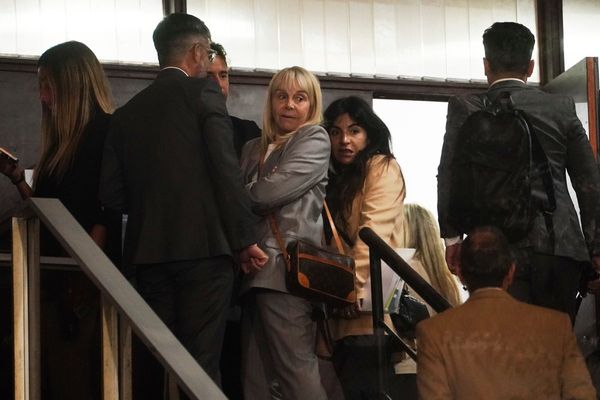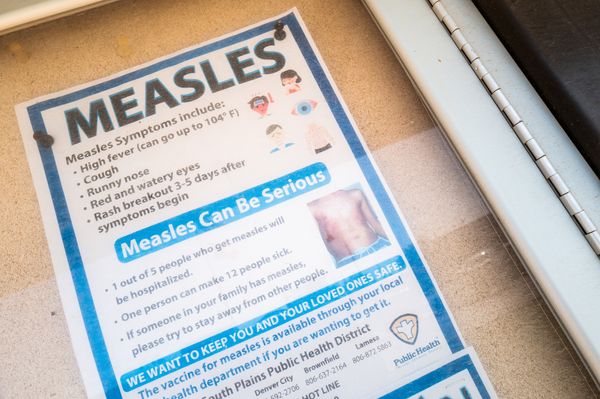
This warren of narrow streets, some so tight that only the noon sunshine penetrates all the way down to the cobbles, is part gothic, part romanesque, and all beautiful. It’s blessed with an embarrassment of architectural riches and wrapped up in wonderfully preserved medieval walls that hug the city tightly, an enchantingly compact tangle of sandstone and terracotta perched on a hill overlooking a quintessentially Tuscan landscape of olive groves and vineyards and winding gravel roads. In any other corner of the world, Siena would be the only show in town.
Around here though, there are several noisy neighbours. And none makes more of a racket than Florence, 50 miles north, famously the birthplace of the Renaissance and home of the Medici, Michelangelo, Giotto and Leonardo da Vinci. These days, it’s also famous for tourist tuk-tuks and newspaper stories about €25 ice-creams, as overtourism slowly erodes the city’s appeal. Which is why it’s better to avoid the roped-off processions of the Uffizi and choose Siena for an art lovers’ city break instead. (And for anyone who can’t make it to Chianti, the National Gallery in London will begin an extensive exhibition, Siena: The Rise of Painting, 1300-1350, in March. It will showcase the city’s importance to European art and its vital role as a catalyst of change.)
Given Florence’s touristic predominance, it is not obvious to many that for a long time these two great Tuscan city-states were rivals. Neither on the coast or a great river, Siena was not the most obvious place for a prosperous city-state, but its strategic location on the route from Rome to the rest of Europe made it both economically and culturally important. Siena became one of the great urban centres of Italy, cementing its status with an unlikely military victory against the more numerous forces of Florence in 1260.
That coup instilled the city with a confidence and a sense of identity that can still be seen nearly 800 years later. Funded by merchants, Siena’s craftsmen and artists transformed the city with audacious public buildings and groundbreaking works of painting and sculpture in what would become known as the Sienese School. It isn’t as widely appreciated these days as that which came after it, unfortunately, perhaps because it ended all too suddenly.
After a period of prosperity and pre-eminence in the 13th and 14th centuries, Siena’s luck ran out in 1348 when the Black Death arrived, eventually wiping out half of its population, including most of its artists and craftsmen. While work on its four miles of fortified walls – extended on a regular basis until then – was stopped in its tracks, its great rival, Florence, went on to dominate Tuscany and the late Renaissance. But it’s no exaggeration to say that without Siena’s influence, that great period of artistic revival would have looked very different.
The best place to get a sense of the Sienese School’s importance is the city’s gothic cathedral and the adjacent Museo dell’Opera Metropolitana (Cathedral Museum). The cathedral is worth a visit for its facade alone, with its emphasis on contrast and verticality, and its mixture of gothic ideals and classical influence. It is, like much of Siena, an antecedent to the coming Renaissance, especially in terms of its sculptural elements. The work of Giovanni Pisano, who has been referred to as the first modern sculptor, incorporated an expressive naturalism that was pioneering for the time.
Inside, the cathedral’s vaulted ceiling is dizzying, while its stunning mosaic floor is almost overwhelming in its intricacy. It took almost 200 years to complete, and the 16th-century painter and art historian Giorgio Vasari called it “the most beautiful that ever was made”.
But, as every self-respecting art fan will know, the cathedral’s main attraction – what was once its altarpiece – now lies in the Museo dell’Opera Metropolitana. Duccio di Buoninsegna’s Maestà is a double-sided work of impressive scale, both figuratively and literally. It epitomises the Sienese School, infusing the gothic tradition with new ideas about expressionism and narrative and moving it away from the rigid symbolism of the past. In Duccio, you can see so much of what was to come – bold colours, imaginative composition, emotion.
Given how influential art historians now hold him to be, it seems very unfair that Duccio di Buoninsegna isn’t a household name.
A couple of hundred metres from the Duomo, the Pinacoteca Nazionale di Siena (National Gallery of Siena) provides the most thorough overview of the city’s artistic heritage, from the early days of the Sienese School and the transformation of the Renaissance to later works from the restrained, devout Counter-Reformation (or Catholic Reformation). It is the world’s largest and most important collection of the era: Duccio features, of course, as do his contemporaries Simone Martini and the Lorenzetti brothers, Pietro and Ambrogio.
It’s an ideal place to compare and contrast the Siena style against the more familiar naturalistic, scientific approach of the Florentine Renaissance. Because for all their innovation, the Sienese masters always retained a strong connection to the byzantine and gothic. Their goal was never a realistic ideal, it was an elegantly stylised narrative meant to transcend daily life and inspire faith. Seeing so many masterpieces of the era in one place gives a fresh perspective on the developments, and motivations, that drove European art in that period.
But even after all that, the most enchanting part of Siena’s artistic appeal is the city itself. It is, in effect, an open-air museum, a maze of hidden frescoes, exquisitely carved fountains and crumbling arches, shaded alleys and sunny piazzas.
In the busier months, Siena’s main square, the Piazza del Campo, will be bustling with activity, but unlike so many of Italy’s historic public spaces, it never feels cramped. Such is the scale of it – after all, they do use it to host a horse race, the Palio Di Siena (2 July and 16 August in 2025) – that you will always find a sunny spot to pitch up.
The piazza is lined with restaurants and cocktail bars, but none are worth writing home about, and anyway, when the weather is good, it’s hard to beat the simple pleasure of a takeaway sandwich and a cold beer.
For the all-important postprandial coffee, leave the piazza and head one street over to the Via di Città, where you will find the Torrefazione Fiorella. Torrefazione means roaster in Italian, and they still roast their own selection of beans here, despite it being one of the smallest premises in the city.
Suitably energised, and perhaps in need of a little variety after all that gothic goodness, a trip to one of Siena’s Contrada museums is an excellent way to delve a little deeper into the city’s history and culture. The 17 contrade are Siena’s historic neighbourhoods, today most famously known for competing in the Palio horse race. Each has its own museum, full of quirky artefacts, local curiosities and, more importantly, a hall of victories where the contradas display their colourful trophy flags from the Palio. It’s the ideal way to explore Siena’s neighbourhoods with a little context – and along the way it will be almost impossible not to stumble upon a few artistic and architectural surprises.
Siena is a place that can almost seem frozen in time. There are modern buildings, of course, but it’s so incredibly intact, architecturally, that its 20th-century apartment buildings seem to blend into the gothic surroundings unnoticed. And if you squint hard enough, or wear dark enough glasses, you may not even notice the other tourists.
Where to stay
Hotel Palazzetto Rosso Art (doubles from £135) is a charming, quite basic place to stay, just five minutes’ walk from the Piazza del Campo. The medieval building has retained some nice features, in particular its stone window frames, and some of the rooms boast stunning views over the city’s clay-slated rooftops.
Siena: The Rise of Painting, 1300-1350 is at the National Gallery, London WC2, from 8 March-22 June (adults £20, under-18s free, nationalgallery.org.uk)







